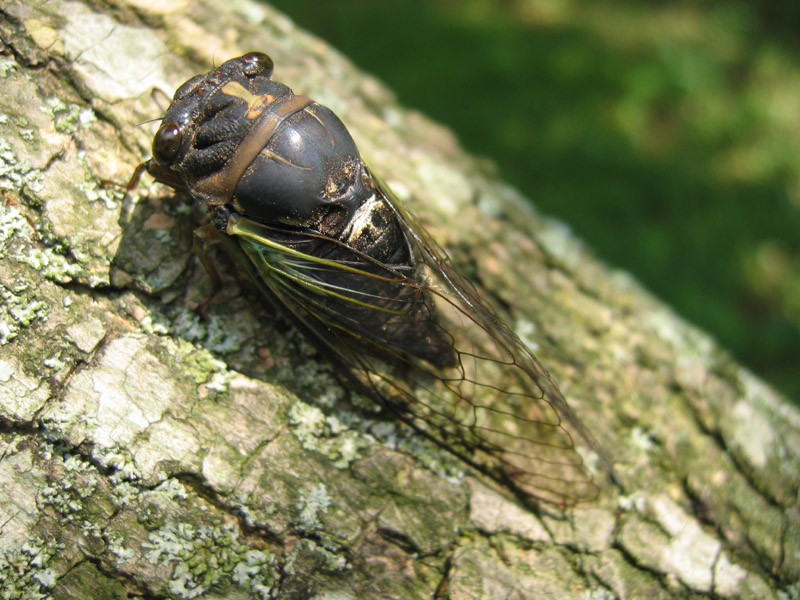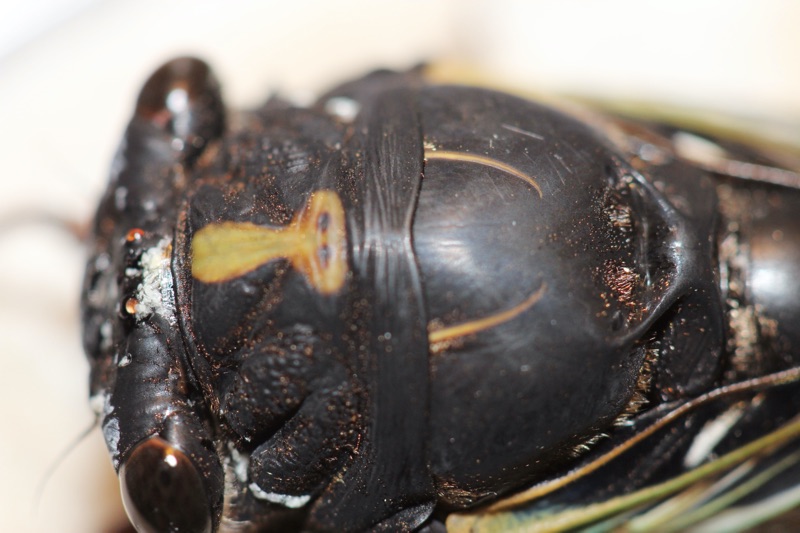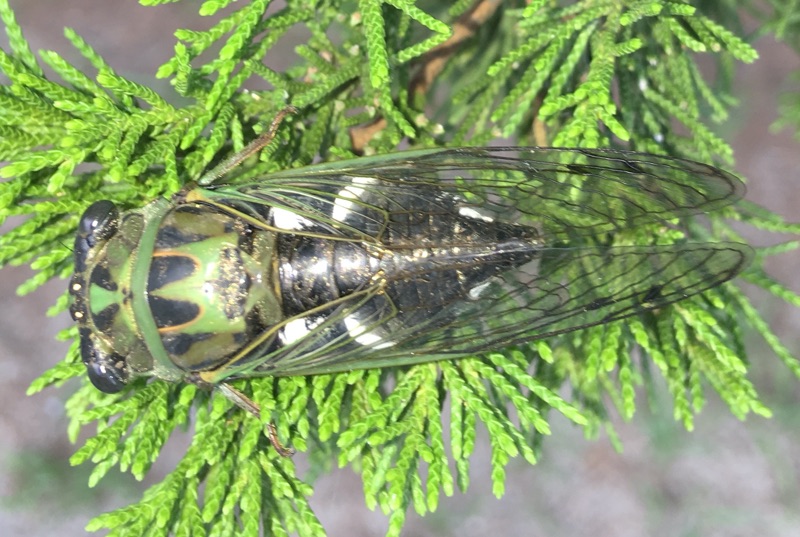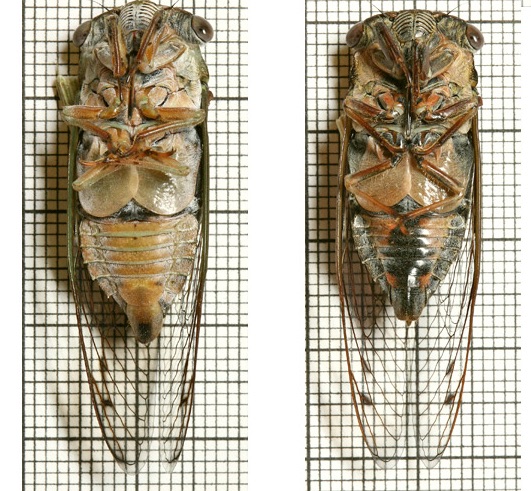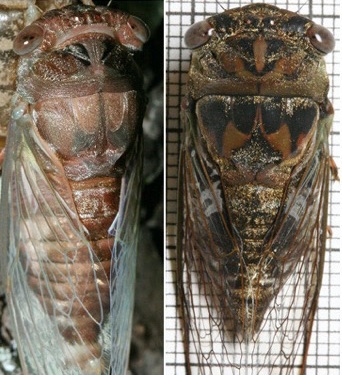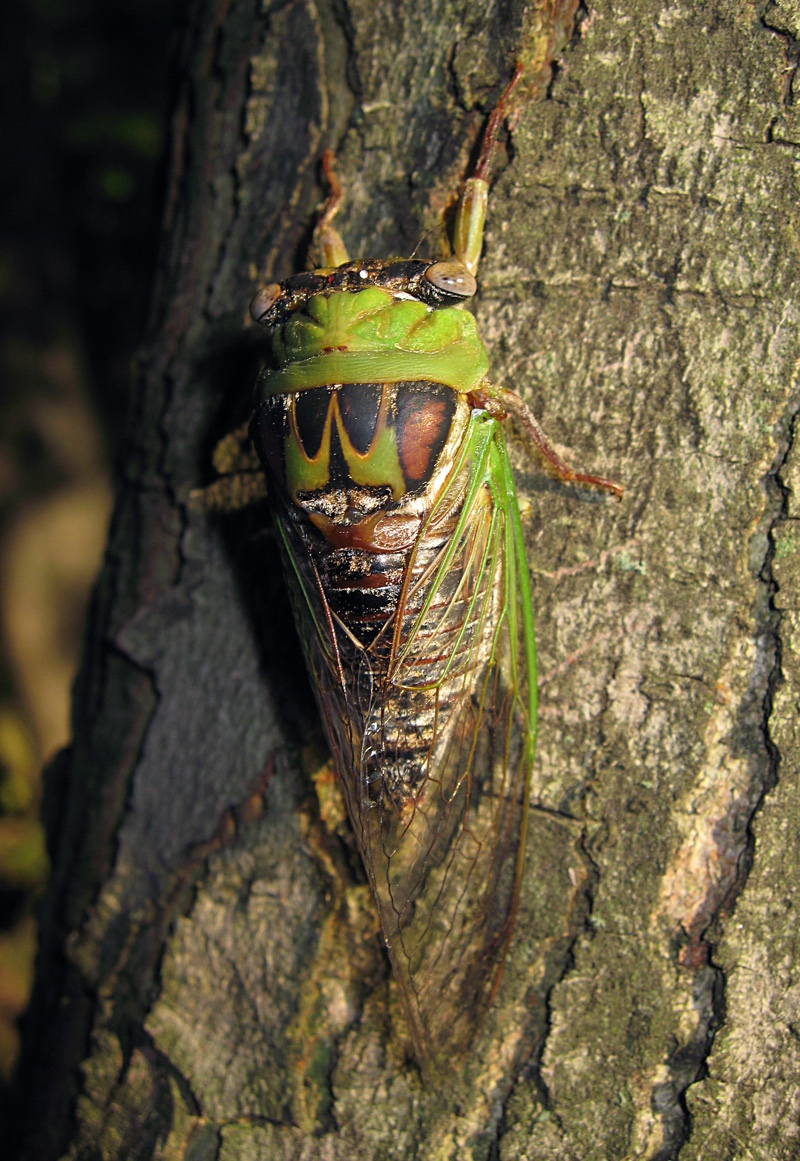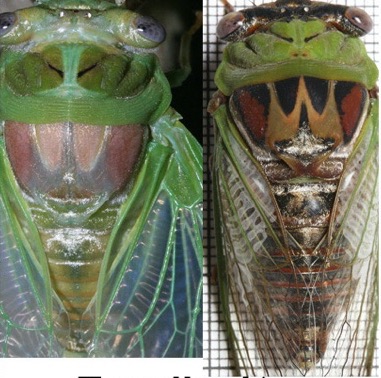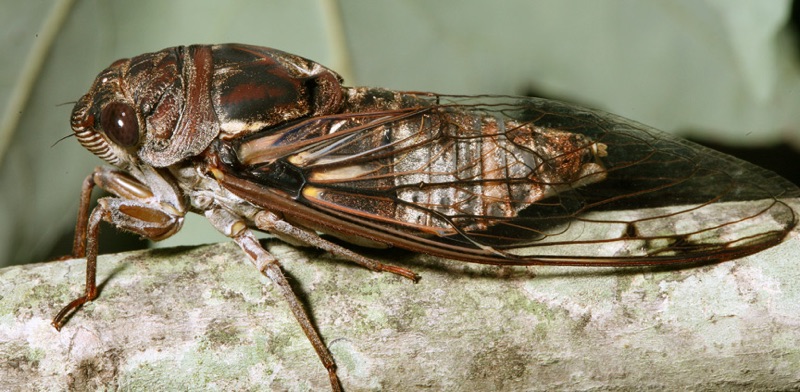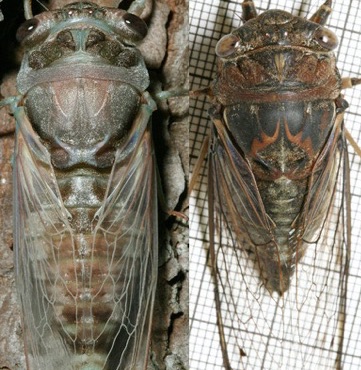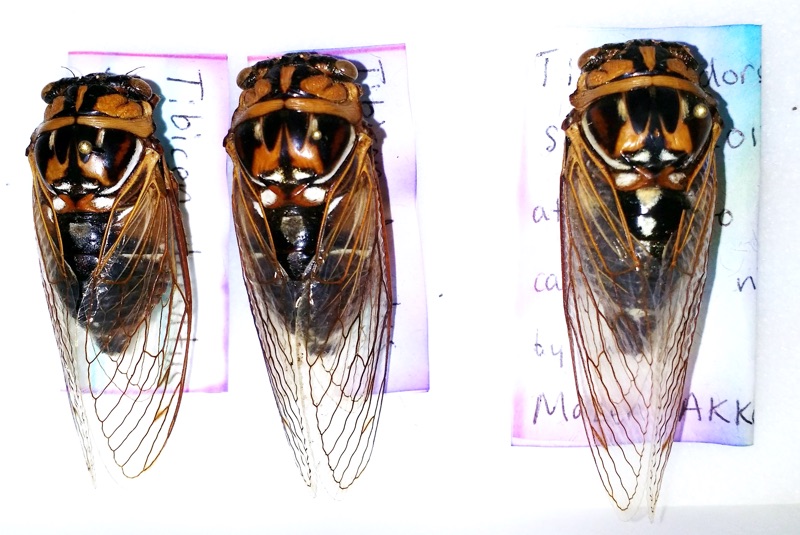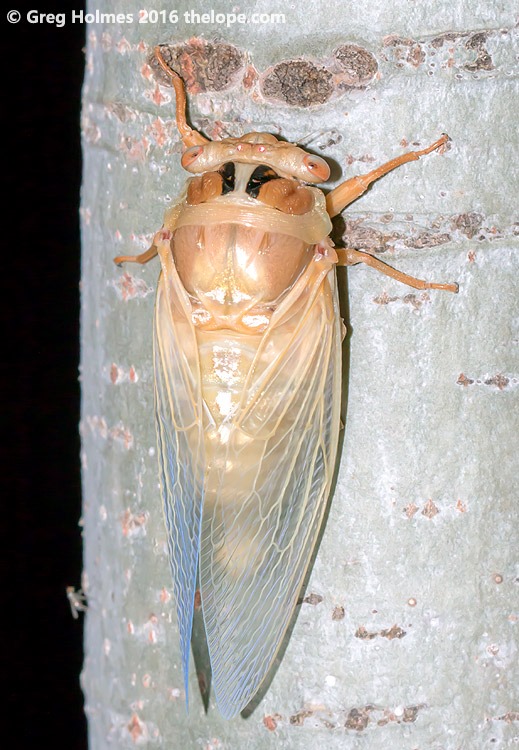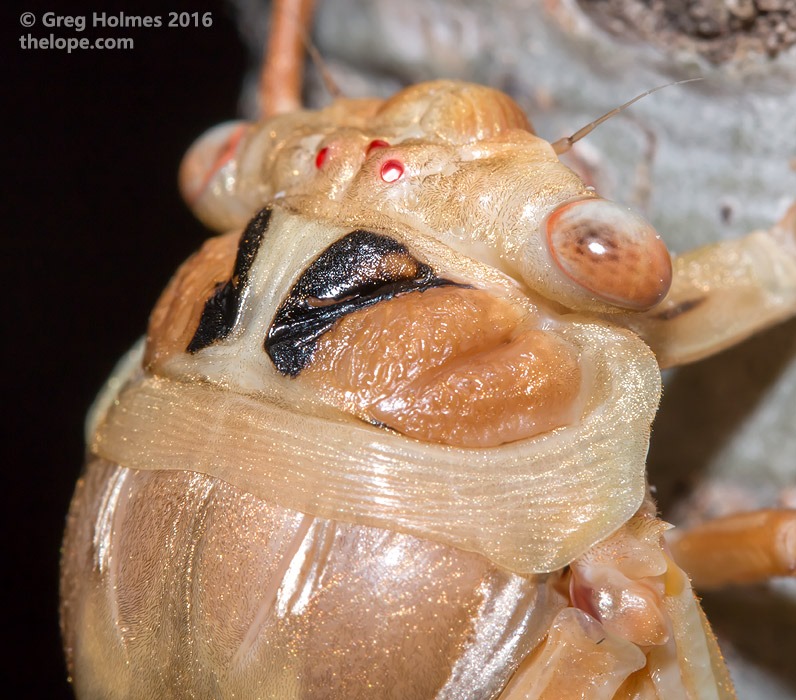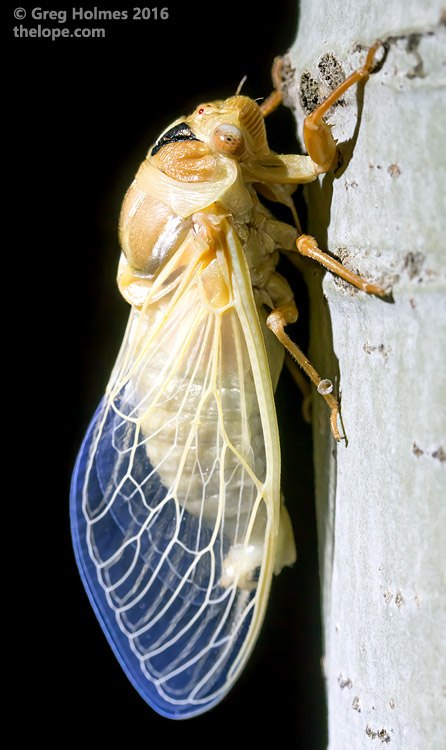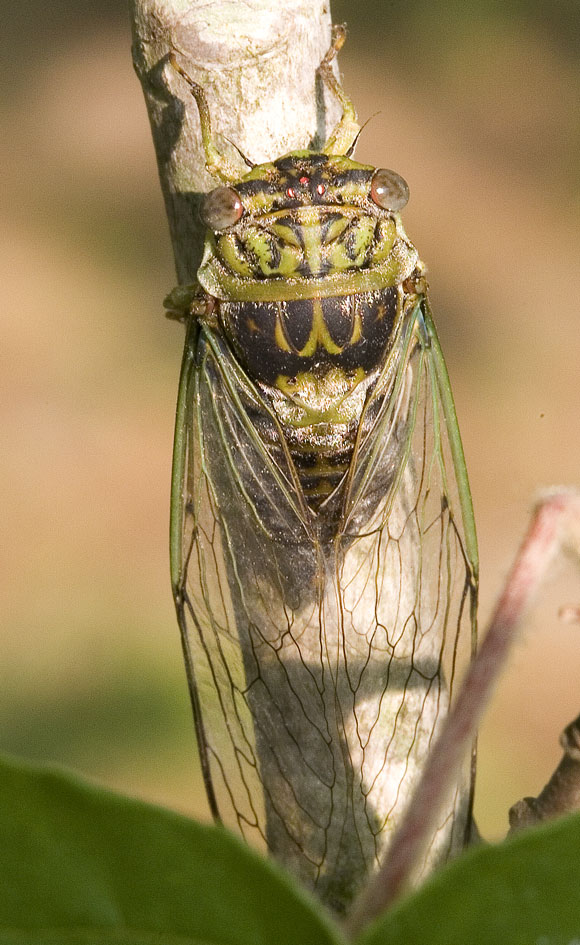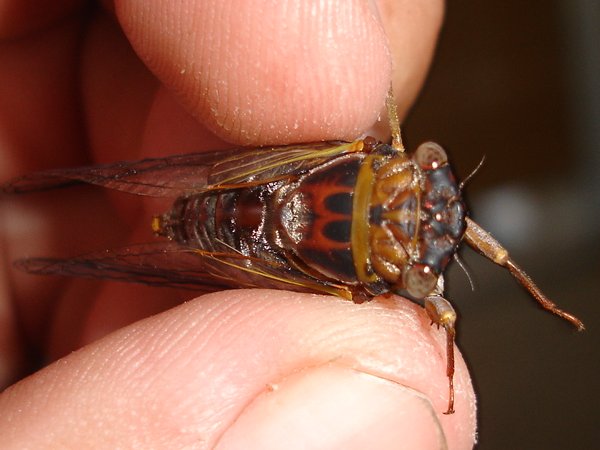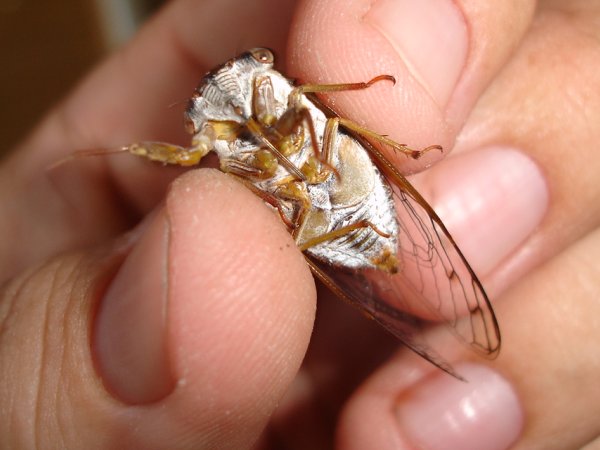Neotibicen winnemanna (Davis, 1912) aka Eastern Scissor(s) Grinder.
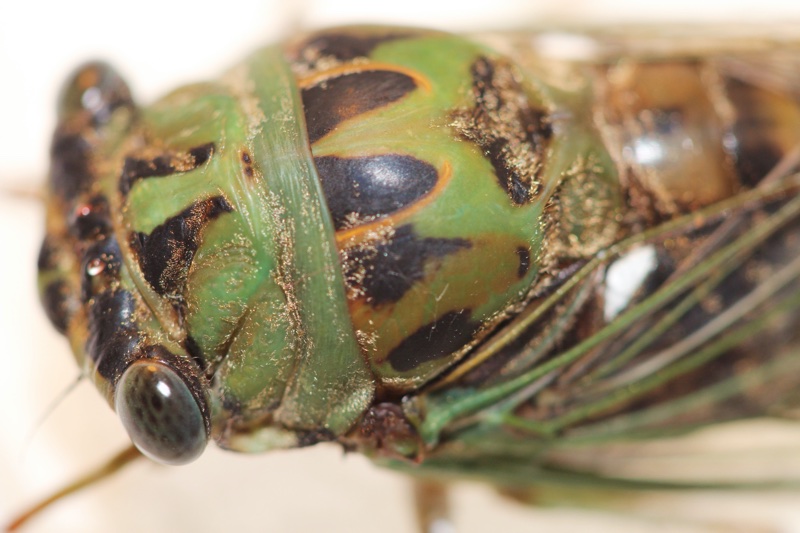
Photo by Dan Mozgai. North Carolina.
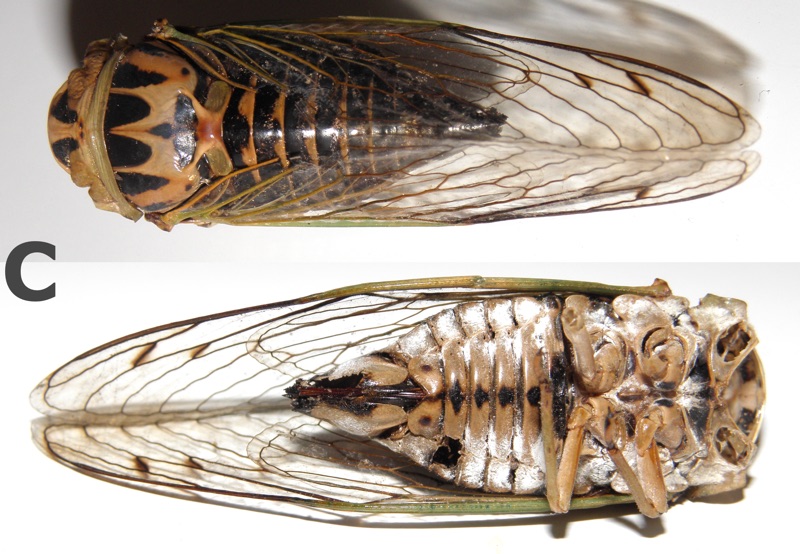
Photo by Dan Mozgai. Titusville, New Jersey. Yes, the head is missing. 🤷 Note the brown coloring on the abdomen.
Song type: Call
Source: ©Insect Singers.
Video Playlist
Playlists contain multiple videos found on YouTube.
Name, Location and Description
- Cicada Name: Neotibicen winnemanna (Davis, 1912)
- Short Name: N. winnemanna
- Common Name: Eastern Scissor(s) Grinder
- Synonym/Former Name: Tibicen winnemanna
- When: June-September. Peak in September.
- Where it is found: DE, DC, GA, MD, NC, NJ, PA, SC, VA
- Maps: Biogeography of the Cicadas (Hemiptera: Cicadidae) of North America, North of Mexico [PDF]
- Description: Like the Scissor Grinder, the Eastern Scissor Grinder seems to have more of an orange hue to the arches on its mesonotum, perhaps even more so than the Scissor Grinder.
- Eye Color: dark green
- Pronotal Collar Color: green
- Identification: Bug Guide
- Taxonomic Information: Integrated Taxonomic Information System
- Identification: Bill Reynolds on iNaturalist
- Cicada Mania Image Library: Neotibicen winnemanna (Davis, 1912) images
- Song: http://www.insectsingers.com/100th_meridian_cicadas/index.html
Identification Key by Wm. T. Davis:1
A. Large, heavy bodied species ; head broad, uncus simple, and first cross vein in the fore wings starting from radius 3 far back, or about one third distant from base of first marginal cell.
B. Uncus longer than broad. Black species with green or greenish markings and black area on the central part of the abdomen beneath
C. Hind margin of pronotum or collar, green or greenish.
Dorsum of abdomen with the hind margin of the segments more or less brown and generally but a trace of pruinose stripe each side on segment three.
Classification:
Family: Cicadidae
Subfamily: Cicadinae
Tribe: Cryptotympanini
Subtribe: Cryptotympanina
Genus: Neotibicen
Species: Neotibicen winnemanna (Davis, 1912)
List of sources
- Davis, W.T. 1918. Mississippi Cicadas, with a Key to the Species of the Southeastern United States. Journal of The New York Entomological Society. Vol. XXVI. Read on archive.org.
- Full Binomial Names: ITIS.gov
- Common names: BugGuide.net; The Songs of Insects by Lang Elliott and Wil Herschberger; personal memory.
- Locations: Biogeography of the Cicadas (Hemiptera: Cicadidae) of North America, North of Mexico by Allen F. Sanborn and Polly K. Phillips.
- Descriptions, Colors: personal observations from specimens or photos from many sources. Descriptions are not perfect, but may be helpful.
Notes:
- Some descriptions are based on aged specimens which have lost some or a lot of their color.
